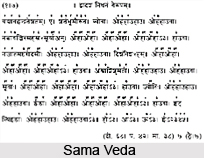 Indian Music in Ancient Age demarcates the fine line that finally flayed the base upon which the palace of musical abode was built and furnished for ages to come. The serenity of music is indeed a sojourn to the world of spirituality from the plebeian world of infra-realism. The ancient era has been a key genre to the permanence of music; music being one of the revenue of in the hunt for temporal refuge from the world of mundane conduct and dogmatic reality and music being an ointment, a balm to unwind the mind with the notes of music.
Indian Music in Ancient Age demarcates the fine line that finally flayed the base upon which the palace of musical abode was built and furnished for ages to come. The serenity of music is indeed a sojourn to the world of spirituality from the plebeian world of infra-realism. The ancient era has been a key genre to the permanence of music; music being one of the revenue of in the hunt for temporal refuge from the world of mundane conduct and dogmatic reality and music being an ointment, a balm to unwind the mind with the notes of music.Ancient music in India dates back to the Vedic ages, over two thousand years back with the concept of Naadbrahma being manifested in the Vedic ages. The prehistoric music was substituted by Ancient Music. Across all the civilization this characteristic feature had been noticed and India was hardly an exception. All organised music traces its origins back to the Sama veda which contains the earliest known form of organised music. The earliest known raga owes its gratitude for its origin to Sama veda and its first reference was made by Panini in 500 BC and the first reference to musical theory was found in 'Rikpratisakhya' in 400 BC. Bharata Natyashastra, etched on 4th century AD, contains a number of chapters on music, which was probably the first clear written work on music that has separated music into octaves and twenty-two keys. The next important work on music was 'Dathilan' that also mentions the existence of twenty-two srutis per octave. According to ancient notion, these twenty-two srutis are the only keys that can be made by the human being. Other works written during this period include 'Brihaddesi' written by Matanga on 9th AD, which attempts to define Raga; 'Sangeeta Makaranda; written by Narada on eleventh century AD, which enumerates ninety-three Raagas and classifies them into masculine and feminine species; 'Swaramela Kalanidhi' written by Ramamatya in the sixteenth century AD and 'Chaturdandi Prakssika' written by Venkata Makhhi in the seventeenth century AD.
For more, visit the link below: